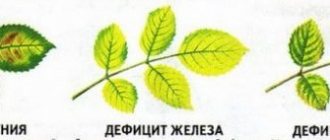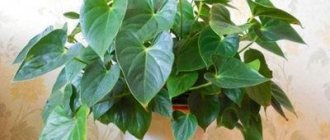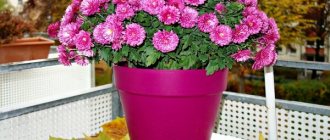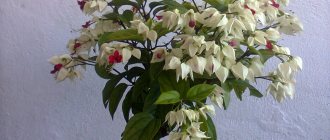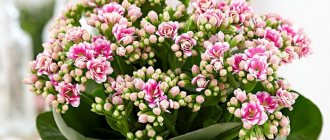Lavender bushes loosen over time - they become excessively spreading, while the amount of green mass and flowers decreases due to an increase in the volume and number of woody stems that do not produce them. The gaps between the branches become large, and the plant takes on an unkempt appearance. In order for the bush to maintain its lushness, density, attractive, compact and solid shape with a dense “brush” of inflorescences for as long as possible, pruning is used.
Let's consider in what seasons, at what age and to what height it is necessary to shorten the branches of lavender to create an aesthetic appearance, we will describe the rules and regulations of the procedure.
Do I need to prune in pots and outdoors?
It doesn't matter whether lavender bushes grow in pots or outdoors - regardless of how they are grown, they should always be pruned regularly throughout their life.
Such shaping and sanitary procedures are assumed by default.
Trimming is an obligatory part of agricultural technology if the user intends to maintain a beautiful appearance and/or productivity of the subshrub as a source of medicinal raw materials.
Purposes of pruning lavender:
- The plant as a medicinal material . Most of the beneficial substances are concentrated in the green, herbaceous mass and flowers. Pruning will help preserve productive vegetation in large quantities, rejuvenate it (young shoots are healthier, more efficient), increase the number of inflorescences, and minimize lignification of branches.
- Garden decoration . The procedure for the same reasons described above, as well as by correcting the shape of the plant, will help maintain a beautiful, compact appearance, abundance, and density of buds. Lavender will look like an attractive, lush oval with a solid, continuous color pattern, which is great for landscaping.
All pruning is at the same time sanitary, rejuvenating and shaping to one degree or another, no matter what season it is carried out. When old and unnecessary branches are removed, renewal occurs : splendor and one-dimensionality appear, the next season the flowering is denser, a beautiful compact shape is maintained, and the appearance of bare tree-like branches slows down.
When pruning, the number and mass of lignified branches, which look extremely unaesthetic for the flower, are minimized. The looseness is reduced - its integrity is preserved, the gaps between flowers are kept minimal, so the impression of color continuity is created.
Is it possible not to prune?
If you do not remove old, massive, protruding long tree branches that are being pushed upward, then they will move apart. An uneven “hedgehog” is created, the bush becomes excessively tall , loses its shape, and looks unsightly.
There are no greenery and flowers on these segments, severe thinning occurs, and all beauty is lost.
Further, the distance between the shoots increases, untidiness and dishevelment intensify , and a useful space on the site is occupied. The bush spreads, often lying on the ground, and bare tree-like branches become noticeable. Such lower thick segments look especially ugly.
Lavender appears as a collection of significantly bare shoots with some greenery and the occasional solitary bud. There is no talk of any attractiveness or productivity for medicinal raw materials.
Important ! Old, long wooden branches of lavender under the weight of snow can break off, crack (they become brittle in frosts), the plant will be damaged, the risk of freezing will increase, and susceptibility to diseases and pests will increase. The compactness with which the subshrub is better protected from the cold is lost, and accordingly, wintering will worsen.
Some gardeners believe that the larger the bush, the better it will withstand the cold, since snow lingers on it, but this is a very controversial opinion (branches can break, the piercing wind lingers). As practice shows, squat vegetation tolerates frost better .
In wild conditions, uncontrolled upward forcing of shoots and their lignification occurs, but the lifespan of a subshrub is often the same as that of well-groomed plantings. That is, the viability does not suffer too much and, moreover, the plant itself perceives the absence of pruning normally and even enjoys its natural development.
So, you don’t have to shorten it, but due to a decrease in the number of flowers, greenery, and distortion of the shape, what lavender is planted for will decrease or completely disappear: beauty, fragrance in the garden, medicinal properties.
Peculiarity ! Regularity of pruning is especially important: if this is not done every year, the flower will immediately begin to grow intensively, and lignification of the shoots will quickly occur.
Without shortening, a nodal bush is formed. Sooner or later it will form anyway. But the task of the procedure is to avoid this for as long as possible and maintain the neatness, compactness and density of green branches and inflorescences. With regular rejuvenation, lavender is allowed only the smallest growth.
The longer the pruning is not carried out, the more difficult it is to get the plant in order. If there is significant neglect, extreme trimming may be required . Moreover, the older the lavender, the more difficult and slower it is restored. Sometimes it has to be uprooted, since it is more expedient to grow a new bush.
General rules
Pruning is done for lavender bushes only in the second year of life. The cut should be on the grassy part of the stem. Woody branch segments are touched only in isolated cases, which we will describe below, since only the green grassy parts are restored (continue to grow). Exceptions: extreme pruning for old bushes, when we need to activate the appearance of new growth, but produced by the roots, and a number of other cases discussed throughout the article.
Rules for pruning lavender:
The instrument is cleaned and disinfected (potassium permanganate, alcohol, calcination, bleach).- Any lavender bush has woody segments at the bottom; they are not pruned, except for a few exceptions.
If this is done for a young plant, then such shoots will not produce new shoots, recovery will be long, or the subshrub will dry out altogether.
- To begin with, remove inflorescences on drooping shoots close to the ground or touching it. You need to shorten it to a height so that the branches are no longer able to lie down (spread along the surface). Then they move on to the rest.
- There are two approaches to shortening height:
- First. Summer - shortened to a relatively small height. Cut off long flower stalks. This initiates re-blooming in the fall - at this time the same part is removed, but a little larger, the inflorescence and 2 - 3 pairs of leaves are captured. If the indicated phenomenon does not exist, it is not typical for the area, then the procedure is skipped, and in the summer you can slightly increase the volume removed.
Spring: The most drastic pruning. It is with this that only 2–5 cm are left above the lignification point. This method is often used when it is necessary to maintain a taller bush, for example, for design reasons.
- Second: cut, always leaving 2 - 5 cm above the woody part. This pruning is best for the health of the plant, as it slows down growth and lignification as much as possible.
- Old bushes (8 - 9 years old), which have lost their decorative appearance, are given a radical pruning - almost the entire above-ground volume is removed along with tree-like segments (only 5 - 10 cm from the ground are left). This is one of the exceptions when it is possible to cut off woody parts. In the spring, the plant will either be replenished with root shoots (they will appear precisely from the roots) and continue to recover or dry out.
When a cut is made on the grassy (green) part, the height is measured from the place where lignification begins. With a short haircut, the bush will look modest, but the next year it becomes lush, rejuvenates better and blooms profusely.
Important ! You can leave more green segment, for example, if the plant has a particularly beautiful shape or was originally formed with a large height, pursuing design goals. But keep in mind: as they age, herbaceous shoots become lignified; the longer they are, the faster more segments are formed that will need to be removed and the more difficult the procedure and restoration will be.
Tools
Do not use ordinary scissors or similar tools with thick or dull blades , as they wear out, injure, and make the edges of the branches uneven, compressing them.
The above provokes rotting of the segments and makes it easier for insects and bacteria to penetrate the wound.
They use a special small pruner, special grass scissors , since their manufacturers specially make the blades and significant segments around them thin. Knives with the described parameters and a tool like a razor are also suitable.
It is important that they are as sharp as possible so as not to injure the fibers surrounding the cut. Sections made with properly selected tools are smooth, clear, and without jagged edges.
Gasoline, electric hedge trimmers, battery shears (like a giant hair clipper) are usually used only for adjusting the shape of a bush when it has already grown back after shortening.
It is inconvenient to use them for basic pruning, since such devices are large and do not allow penetration down and into the bush. They also capture a lot of vegetation, which makes it difficult to plan the cutting height individually for each sprout or small number of branches.
Planting process
Seeds are sown for seedlings in a common container, where they are grown until 3-5 leaves appear. Planting technology:
- Place a layer of drainage 5-7 cm thick at the bottom of the container. Fill it with nutritious soil and moisten it with a spray bottle.
- Plant the seeds to a depth of 2-3 cm, sprinkle with a thin layer of sand on top. Cover with transparent film or glass. Place in a warm and bright place. The optimal temperature is 22-25 o C.
- The first shoots appear after 30-40 days, after which the shelter can be removed. During this time, you need to monitor moderate soil moisture and provide up to 10 hours of daylight.
When exactly should it be done?
What kind of pruning for lavender is carried out:
- Summer.
- Autumn (not always).
- Spring.
- Extreme. In the spring. For old plants (8 – 9 years old). The lignified parts are removed almost at the root, which in other types of cuttings must be left for younger plants (only the herbaceous parts are cut off).
Interesting! You can find information that there are only two annual prunings for lavender - summer and spring. This is not so, there can be three of them - an autumn procedure is added, but only if at the end of summer - beginning of autumn the subshrub blooms again, which is not always observed.
However, this is typical for most regions of Russia and, of course, always for warm southern areas. You can ignore the autumn haircut, but it is highly advisable to do the other two every year.
Timing recommendations for other purposes:
If it is necessary to initiate re-blooming at the end of summer or in September (relevant for those areas where this is possible), then the procedure is carried out after flowering.- If they are collected for medicinal purposes, tea, removing moths, for placing in a vase to enjoy the aroma in the house for a while - immediately when the buds open (late spring, May, early summer).
At this time, the inflorescences emit the strongest smell and are most saturated with useful substances. Harvesting is carried out during the day, when the concentration of oils is maximum. The same period is recommended if dried flowers are used for compositions, ikeban - to reduce the shedding of dry parts.
- If you want to enjoy the aroma in the garden, you can wait until the middle or end of flowering (2 - 3 weeks), but then the medicinal properties will be slightly weaker, since the amount of essential oils will decrease.
- To collect seeds, you can take your time and wait for the buds to dry out completely.
Shortening in autumn
Autumn pruning for lavender is done at the following times:
- In warm, and often in temperate climates, the bush produces buds (repeatedly) in the fall, then the end of flowering - the first half of September or earlier - serves as a signal for the event. It all depends on the variety, for example, in Hidcote Blue, Siesta, Two Seasons, this phenomenon is observed already 4 weeks after summer pruning.
- In the absence of re-blooming, autumn pruning is not carried out in northern and cold regions. Theoretically, the event can be carried out, but, as a rule, it is not done, unless the height of the bush will interfere with wintering. However, you can refuse it, even if the buds appear again, for example, when the lavender has not been driven out too much over the summer.
Interesting ! Among other things, the purpose of autumn pruning of lavender is to prepare for wintering. A shortened plant will be much more convenient to cover for the winter.
Summer uniform
Dates of the summer procedure (usually the second half of July):
when the end of flowering begins, when it is still ongoing, but is already coming to an end: some of the inflorescences are no longer there, they have fallen off or dried out, but still living buds are observed;- if you need to stimulate re-flowering: then choose the period before seed setting.
The value of summer processing:
- the goal is to maintain the splendor of the bush and initiate its re-blooming;
- advantages of the event: literally in a few weeks there is an intensive growth of new green mass, that is, even before winter you can enjoy beautiful and compact bushes with dense young growth;
- It is the branches and inflorescences harvested in summer that are best for use as medicinal raw materials, anti-moth remedies, and for tea, since this season they contain essential oils in maximum quantities.
Spring rejuvenation
Spring pruning, immediately after frost, during the period when vital juices begin to move intensively, before flowering, is considered the main one. It is this that will prevent the plant from being overly expelled until the next procedure (in the summer); accordingly, lignification of the shoots will be minimized, and they will not be exposed from below.
It is in the spring that they create the basis for a decorative, design shape, usually spherical . The bush takes on its final form, the outlines of which will be maintained by subsequent procedures.
This video describes spring pruning of lavender:
Covering lavender for the winter
English narrow-leaved lavender is quite frost-resistant, especially mature bushes. They will easily overwinter without shelter. And they can easily withstand frosts down to -25 °C. The root system of lavender is taprooted and goes very deep, where it does not freeze.
On the other hand, under cover there is a chance that lavender will get sick, because it does not tolerate excess moisture that can form there. For this reason, I do not cover adult plants, but only those bushes that are 1-2 years old; their roots are not yet so well developed, so they need protection.
To cover such lavender bushes, you can use spruce branches (or lutrasil, or something like that), it will create a warm air cushion for them. If you have a lot of snow all winter, then you can sprinkle the bush with snow and then it will overwinter well.
I cover young lavender bushes only when the air temperature remains confidently around 0 °C for several days, not earlier. I make a hut from fir branches and tie it with rope so that it does not fall apart.
Step-by-step instruction
In general, the rules for pruning throughout different seasons are similar. But keep in mind that there are two methods regarding height, described above, and there are also minor nuances, which we will describe below.
Instructions for autumn and summer shortening
The stems have tree-like and green segments . The first ones are for not old, significantly lignified bushes, that is, they are not subject to pruning during normal, not extreme, pruning. Only the green tops are shortened.
As already mentioned, two approaches can be used: with the first, shortening is maximum - the cut is made 2 - 5 cm above the lignification point. The second is more gentle, its features:
- The summer event, when at least 1/3 of the stem is removed, is not as radical as the spring one. This part is usually the part with peduncles and 1 - 2 cm below them.
- Long flower stalks are cut off before seeds begin to set. Thus, the plant will not use its powers on them and will give them up to bloom again.
- But during repeated flowering (autumn), the same indicated segment is removed, but a little longer with two to four pairs of leaves.
Important ! When carrying out the procedure in the fall, you must remember that the shorter the branches are made, the longer the period of awakening in the spring will be. However, this will not particularly harm the plant and you can put up with it if you need to get a bush of a very neat and compact shape. Low lavender also overwinters better.
Cut branches can be used for medicinal purposes and have a strong aroma. Or they cover the soil around the bush in addition to the main mulching, insulating it for the winter.
A Guide to Spring and Extreme Trimming of Lavender Bushes
Rejuvenation of lavender in the spring (during the growing season) is positioned as the main thing, it is more radical.
Instructions :
- trim the stems evenly so that approximately one third of the length remains, or, if you decide to resort to pruning with a minimum height, then leave 2–5 cm of green shoots from the lignification point, and optimally 3 cm;
- It’s good to leave at least a couple of leaves on the branch to form new shoots.
The place of the cut should be slightly above the outward-facing eye or, if you need to thicken the bush, above the inward-facing bud - in this way you can modify the shape of the lavender.
In the spring, extreme pruning is carried out for old, significantly lignified bushes. It is the tree branches that are cut out. Leave about 5 - 10 cm above the ground. A two-step method is used. In one year, the branches from the outside of the bush or some of them are removed. During the time before the second stage, new root shoots should appear.
In the second year, the central stems or the remaining volume are removed . This way, stress will decrease and there will be a greater chance of recovery. If the season is excessively hot, the event is postponed. Even under favorable conditions, the described method is not always successful: cases where old lavender dries out after this are quite common.
Selection and preparation of planting material
Most often, lavender is planted with seeds at home. Planting material should be purchased only from nurseries or specialized stores where the necessary storage standards are observed. It is advisable to plant in the first half of March, so that by summer the plant will grow and become stronger. But at home, sowing is permissible until the beginning of summer.
Before planting, seeds need to be stratified for 30-40 days to enhance germination. They are laid out on moistened peat or sphagnum 5-8 cm thick and covered with the same layer on top. After this, put it in a cool place with a temperature of 5-6 o C.
When can tree growth be trimmed?
Mature lavender bushes are characterized by the presence of many semi-lignified stems (they were once green and herbaceous) - they look like thin, straight, elastic rods. Usually they retain green leaves and shoots at the bottom. Such branches can be cut to the specified growth, that is, almost completely.
In addition, if the plant produces new basal shoots, then you can get rid of the old tree-like shoots altogether , but this must be done in proportion to the number of the first ones, so as not to excessively thin out the bush. However, this is rarely done - only when the bush becomes excessively thick, which is not particularly typical for lavender.
We illustrated the nuances described above with a photo and diagram below:
Rules for spring pruning
As soon as warm weather has established itself, without winds, rains or other precipitation, the lavender should be inspected. After wintering, you may find elongated, thin branches that need to be removed. They can break and harm the plant. These requirements must be met, but then everything depends on the desired result.
Post-procedure care
Rules for care after pruning are the same rules that should always be applied (the procedures are combined), namely:
- At the same time, the bush and the adjacent area are cleaned of fallen organic matter and debris, and weeded.
- They do loosening (dig up the ground around the bush). This measure, despite its seemingly insignificant nature, is vital for lavender. The plant loves loose, light soils through which air and moisture penetrate to the roots. On churned, clayey soil the flower will wither.
- After fluffing, fertilizing is done. Then water: the first time generously, then as the soil dries out, stop moistening the soil for the winter. Lavender does not like overwatering.
Preparing for winter
Let us separately consider preparations for wintering during autumn pruning (these measures are mandatory even without it):
- The bushes are tied to prevent snow from getting inside.
- Mulching. Use sawdust, straw, peat, compost and humus (at the same time they will be fertilizer). The best material is special decorative substrates with different shades. In our case, they are more appropriate: they preserve aesthetics, do not provoke rotting, gradually decompose, and serve as a long-lasting fertilizer. Other mulch must be periodically checked for damping and rot.
If the material is prone to the above, then only the near-trunk circle is covered with it; if not, then it is poured under the bush itself, spreading and lifting the branches. You can also combine different mulches.
- Lavender is unpretentious and usually tolerates mild winters well, and you can also find examples where a bush, even without the use of insulation, normally wakes up in the spring after periods with 25-degree frosts, but with a heavy layer of snow. Still, cases of freezing are not so rare as to ignore insulation.
- If the winter is moderate and snowy, then you can get by with mulching, and in cold weather, generously cover the bush with snow. But additional shelter is definitely required in the northern regions and during the onset of intense frosts, even for the only officially recognized frost-resistant variety - Lavender angustifolia. Cover with spunbond, lutrasil and similar material, spruce branches, wooden boxes.
Watering is stopped in winter. The shelter can be in the form of a greenhouse, a hut made of spruce spruce branches (tied and secured with twine), etc., but without a greenhouse effect - lavender will not tolerate damping off, as well as spring excess moisture. A thick layer of snow is poured onto the shelter.
Advice ! For lavender mulch, fallen leaves, straw, and hay are not desirable, since they are often infected with microorganisms and provoke damping off, rotting, and the proliferation of fungi and pests. If this is used, then it is necessary to regularly update or ventilate (fluff) the material. It is more advisable to use a decorative substrate, compost, sawdust, peat.
Feeding
If you decide to feed lavender, then do it twice a year.
Combine the procedure with spring and autumn or summer pruning. In the first case, nitrogen substances are used (promote the growth of greenery), in the second - mineral, potassium-phosphorus substances (wood ash, mullein, humus).
Example of special preparations: Agricola-Fantasia, Ross universal . In the fall, you don’t have to fertilize, especially when slowly decomposing substrates, humus, compost are used as mulch, unless you add a little superphosphate.
The lack of fertilizing will not particularly harm lavender - it has reduced requirements for the amount of fertilizer and usually grows well even on poor soils. For this shrub, it is more important to provide long daylight hours and moderate moisture.
Description
Lavender is an herbaceous plant with beautiful purple flowers, but it is famous not for its external aesthetics, but for its rich aroma. Many people try to grow lavender in their own area precisely because of the pleasant smell that fills the area during the period of growth and flowering of the plant. In addition, lavender is often dried and then used at home as a flavoring agent.
Sunny regions with rocky soils are considered ideal conditions for the growth of lavender. But this does not mean that the plant cannot be grown in other conditions. Everything is quite possible, but you need to follow some recommendations (more on them below), and also remember the need for mandatory pruning of the plant.
Lavender grows as a bush. It is updated annually. And every year the bush becomes thicker, and the stems become heavier and harder. If lavender is not pruned, you can expect only a small amount of fragrant flowers. But correct and timely pruning becomes a guarantee of obtaining a large number of flowering shoots, which can be collected several times a year.
Possible mistakes
We list not only typical, but also rare mistakes when cutting lavender:
The cut was made with a dull, dirty instrument that weakened the edges of the stem. It is necessary to cut at right angles, avoiding the formation of sharp, uneven, jagged ends.- For mulch, rotting, damp-out material is used, and it is not ventilated or renewed. There is a risk of stem rotting.
- Instead of a greenhouse with access to fresh air, a greenhouse was made.
- Excessive watering after cutting. The first watering can be plentiful, but then it is done as needed, when the soil dries out. Lavender does not like either excessive waterlogging or excessive dryness.
- The autumn procedure was performed just before the frosts. It needs to be done while it is still warm - in September, immediately after the bush has bloomed.
- Pruning in the first year of life.
- Too fast spring pruning. The most dangerous is not even winter, especially snowy ones (it is, on the contrary, favorable), but this season with its temperature changes, alternating thaws and frosts. The flower wakes up slowly. You should not immediately remove the shelter, dry tops, or extra branches, as it is still cold. It is better to plan the event for a period a little after mid-spring, when it will be warm.
- The summer/autumn event is held before flowering or too early (when the flowers are about to appear). We must count from the moment when the inflorescences have just bloomed.
- The cut is made on the woody segment. The desired point should be on a green, grassy part. Tree-like segments can only be affected by extreme shortening for old bushes and with the exceptions we have considered.
- A haircut that is too short can cause harm. You should not leave less than 2 cm of the green part, this will complicate restoration. The optimal figure is 3 cm. It is desirable that the remaining segment have 2 - 3 leaves or their rudiments.
Selection of location and conditions of detention
Decorative lavender is considered a capricious plant. To avoid problems with flowering and growth of the bush, you should wisely choose a place for growing. The flower is sensitive to any changes in external conditions, which is important to take into account at the planting stage.
Lighting and location
Lavender is a light-loving crop; even slight darkening can lead to a decrease in growth rate and withering of shoots. The pot with the plant should be placed in the center of the window sill on the south side of the apartment; in summer, it is best to place the flower on a balcony, loggia or local area. The recommended daylight hours are 10 hours. In winter, when there is insufficient lighting, it is advisable to provide additional illumination with a phytolamp.
Temperature
Room temperature is comfortable for lavender development. The plant has poor frost resistance and can die at temperatures from -15 o C. If you keep a flower pot on the balcony, at the first return frost, you need to bring it into the house. Throughout the growing season, it is recommended to maintain heat in the range of 15-24 o C; when entering the dormant period, the temperature can be lowered by 3-5 degrees.
Air and humidity
The plant is insensitive to air humidity and can grow in the range from 60 to 80%. To maintain growth and development, it is advisable to carry out regular ventilation. Lavender responds well to fresh air, but exposure to drafts can be detrimental to it. During the heating season, it is recommended to spray the leaves once a week.
Soil and pot
To plant decorative lavender, it is recommended to choose a spacious pot to accommodate a strong root system. The optimal diameter is 25-30 cm. The total volume should be at least 3 liters. Low-growing varieties of lavender can be planted in a common rectangular container. There should be drainage holes at the bottom. Experienced gardeners recommend choosing products made from light-colored ceramics.
The soil must be fertile and loose. It is advisable to use ready-made mixtures for decorative flowering crops. If you prepare the soil yourself, you should mix turf soil, river sand and humus in a 2:1:1 ratio. Before planting, the substrate must be disinfected with a 1% solution of potassium permanganate.

